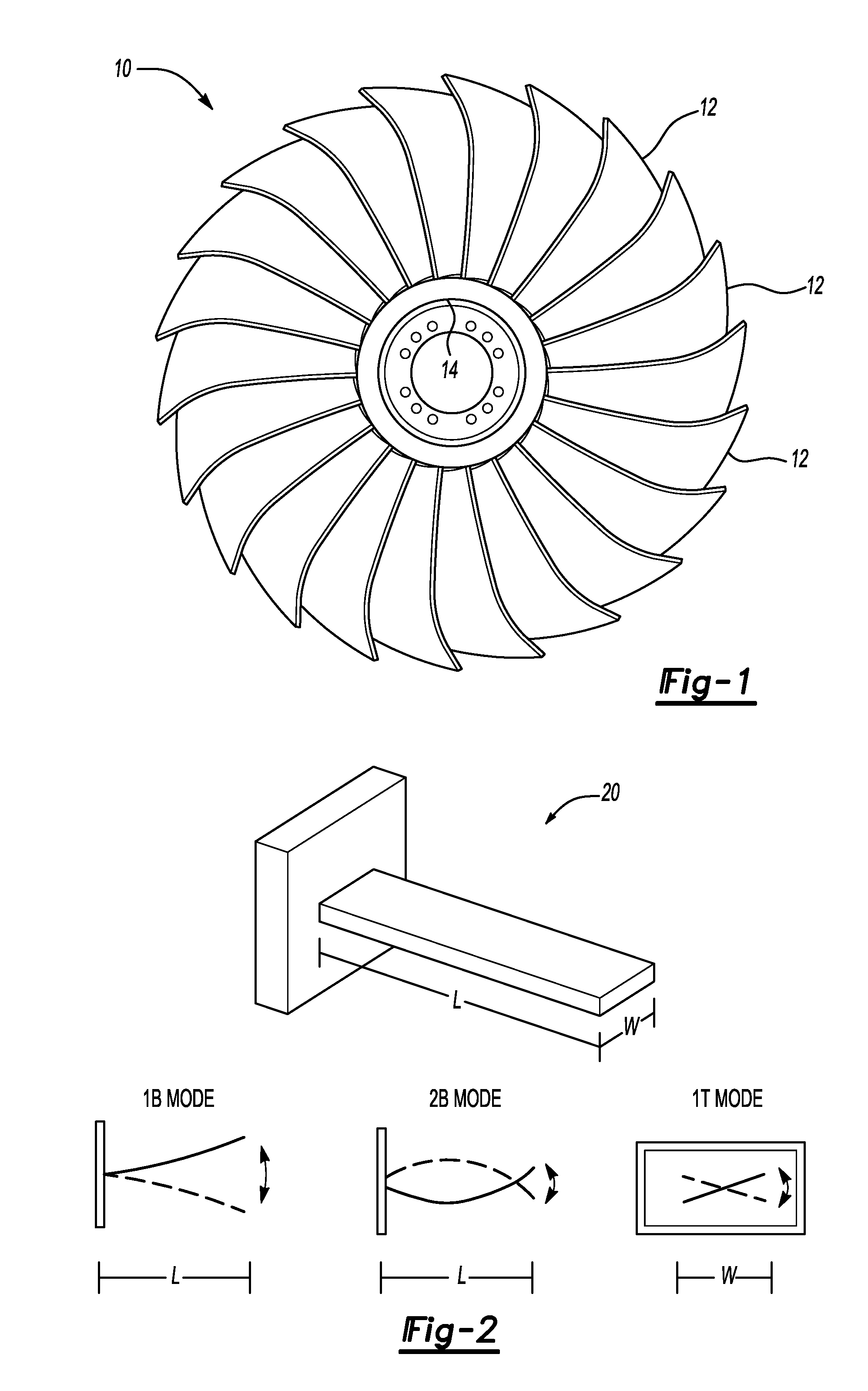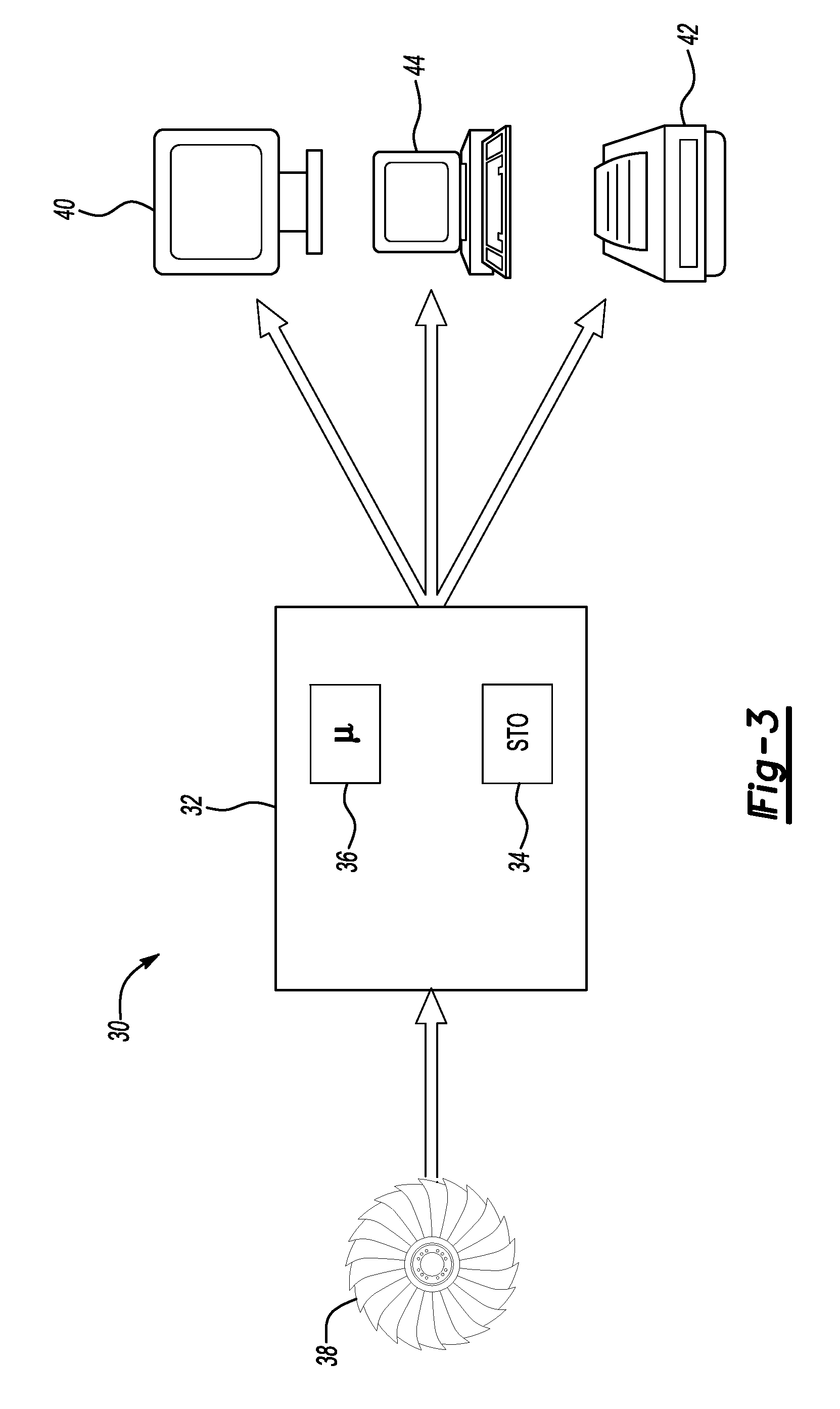Aeroelastic model using the principal shapes of modes (AMPS)
a technology of aeroelastic model and mode, applied in the direction of amplifier modification to reduce noise influence, fluid pressure measurement by mechanical elements, special data processing applications, etc., can solve the problems of engine damage, engine rotor damage, engine failure,
- Summary
- Abstract
- Description
- Claims
- Application Information
AI Technical Summary
Benefits of technology
Problems solved by technology
Method used
Image
Examples
Embodiment Construction
[0014]An example rotor 10 including rotor blades 12 extending from a disk 14 is illustrated in FIG. 1.
[0015]During engine operation, the rotor 10 spins rapidly and air flows between the rotor blades 12 at high speeds. Under certain circumstances, the aerodynamics can destabilize a structural mode of the rotor 10. When the unstable mode is briefly excited, for example, by a small gust of wind, the amplitude of the response will grow instead of diminish, i.e. the rotor 10 will “flutter.”
[0016]Damping is the key in determining whether a given rotor will flutter. There are two primary types of damping: 1) structural damping; and 2) aerodynamic damping. For many rotors, the structural damping, which is always positive, is so small that it can be neglected. Therefore, aerodynamic damping is the critical parameter.
[0017]Aerodynamic damping is the manifestation of the unsteady (time-varying) aerodynamic forces on surfaces of the rotor blades 12 when a given mode vibrates. When a structural ...
PUM
 Login to View More
Login to View More Abstract
Description
Claims
Application Information
 Login to View More
Login to View More - R&D
- Intellectual Property
- Life Sciences
- Materials
- Tech Scout
- Unparalleled Data Quality
- Higher Quality Content
- 60% Fewer Hallucinations
Browse by: Latest US Patents, China's latest patents, Technical Efficacy Thesaurus, Application Domain, Technology Topic, Popular Technical Reports.
© 2025 PatSnap. All rights reserved.Legal|Privacy policy|Modern Slavery Act Transparency Statement|Sitemap|About US| Contact US: help@patsnap.com



